Since the gorgeously violet-blue gemstone tanzanite was first discovered in the 1960s, it has become a popular stone for various types of jewelry, from rings and pendants to earrings and brooches. There’s no doubt that this gemstone has become increasingly popular in recent years, but despite that, it’s actually the rarest gemstone on the planet. Indeed, in a few decades, there could be no more tanzanite left to mine. Given its scarce supply, you might assume that this stone sells at a high premium, but even though it’s exceptionally rare, it still sells for far less than diamonds.
Contents
Discovering The Gemstone
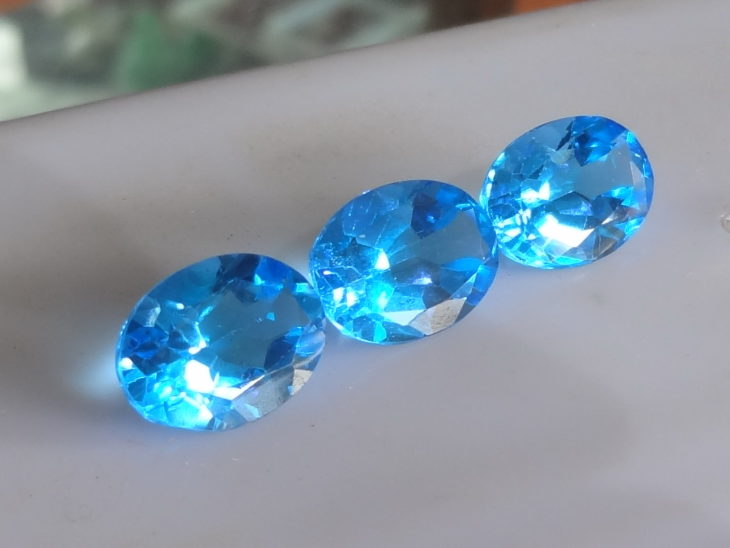
Source: Pailin Gemstones
Tanzanite is the name given to the blue and violet variety of the mineral zoisite. The stone’s mesmerizing color is caused by small amounts of vanadium. Unlike virtually all of the planet’s gemstones that have been known and used for centuries, it was not discovered in commercial quantities until 1967 when a Goan tailor and gold-prospector called Manuel de Souza found fragments of bluey-purply gemstones on a ridge near the village of Mirerani in Tanzania.
Unable to classify the stones, Manuel de Souza showed them to a geologist in Nairobi called John Saul, who later became famous for discovering ruby deposits in Kenya. Saul then sent samples of the stones to his father Hyman Saul, who in turn took them to the Geological Institute of America in the hope of correctly identifying the mysterious blue stones. While the institute, and also the British Museum and Heidelberg University ended up correctly identifying the gemstones, the first person to actually discover the mineral’s identity was a government geologist called Ian McCloud who was fittingly from Tanzania.
The Commercialization of Tanzanite by Tiffany & Co.
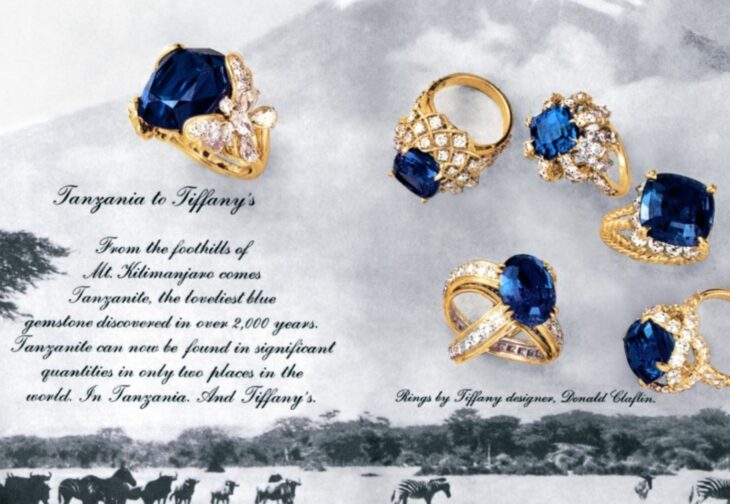
Source: Tanzanite Foundation
Upon finding out that the stone was a variety of zoisite, it was given the scientific name of blue zoisite. The world-famous jewelry company Tiffany & Co. soon expressed an interest in the new gemstones, and seeing as the stones could only be found in one small area in Tanzania, Tiffany & Co. knew it could capitalize on the rarity of the new gems.
But if it wasn’t for Tiffany’s, the gemstone could have ended up with a completely different name. “Blue zoisite” doesn’t have a great ring to it, commercially speaking. So, Tiffany & Co. decided to market the gemstones as “tanzanite,” named after their place of origin. This was a much more appealing name to stimulate customer interest, and with a hefty marketing campaign, Tiffany & Co. managed to make this gem the trendiest gemstone around. In Tiffany’s original advertising campaigns, they proudly stated tanzanite could be found in only two places: Tanzania and Tiffany’s.
In the few decades since then, tanzanite has become the second-most popular blue gemstone after sapphire, and due to its continued popularity, in 2002, it was designated as a modern birthstone for the month of December. Today, you can find a range of tanzanite jewelry, such as wedding rings from various jewelers like Diamondere.
The Limited Supply of Tanzanite
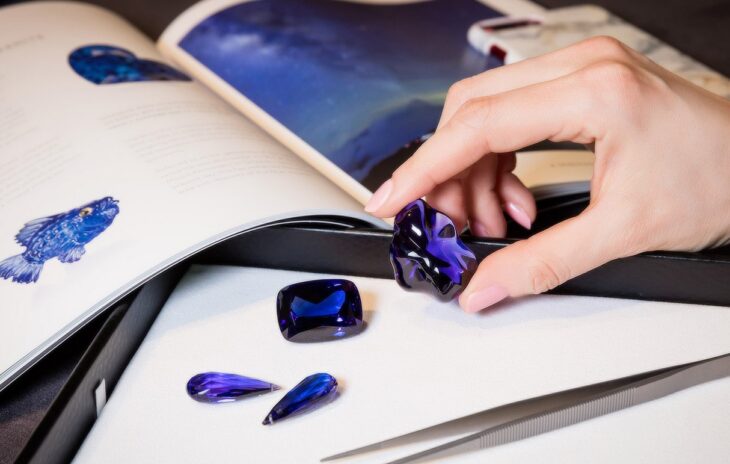
Source: Katerina Perez
From 1967 until 1971, when the Tanzanian government nationalized the tanzanite mines, an estimated two million carats of the gem were mined in Tanzania. And it’s not only that the gems are only found in Tanzania. They are also only found in a very small area of the African country, which is why the stones are so rare. The mines are located in an area of only around eight square miles, near the base of Mount Kilimanjaro in the Merelani Hills. Tanzanite is the only gemstone in the world that has a growing-popularity that has such a limited supply. Many people believe that the gemstone’s resources could be completely depleted in just a few decades.
The Beautiful Blue-Violet of the Gem
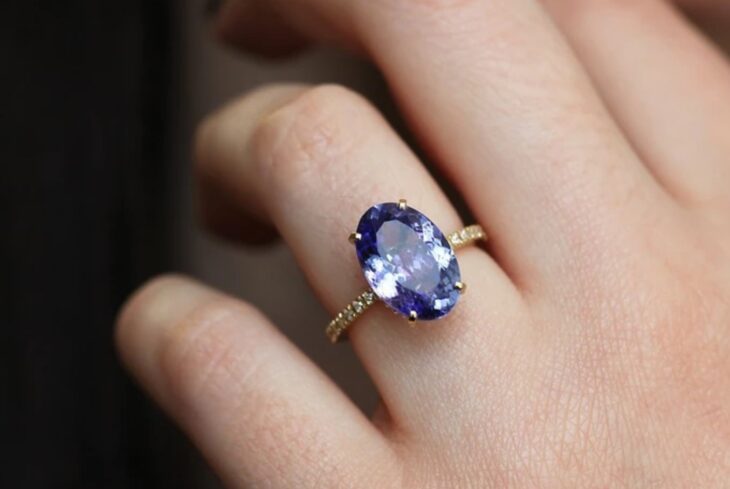
Source: Capucinne
Tanzanite is usually regarded as being of a bluey-violet hue, but it actually has a strong trichroism. Depending on the crystal orientation, the gem can appear blue, violet, or burgundy. It can also appear differently when viewed in various lighting conditions. But in its raw state, tanzanite is a reddish-brown color. It requires heat treatment to remove the brown hue veiling the stone’s beautiful blue-violet color. The zoisite is heated to 600 degrees Celsius for around thirty minutes. The heat causes the oxidation of the vanadium, resulting in the bluey color.
The Size of the Gemstones
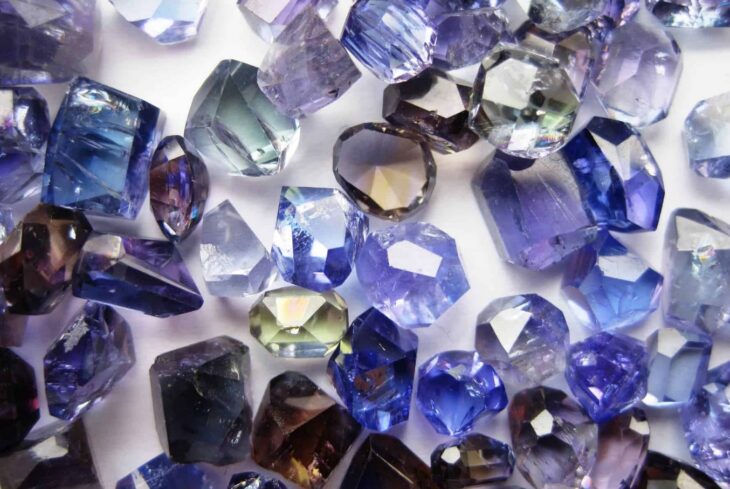
Source: THE TANZANITE EXPERIENCE
Like all other gemstones, tanzanite can vary greatly in size. But small stones are far more common than large ones. The majority of the stones are under five carats in weight. However, there are stones that weigh as much as fifty carats, but they are particularly rare. Regardless of size, gemstones with top-grade color are the most valuable. Large gemstones with top-grade color are the rarest of the rare. Most are purchased by investors, collectors, or museums.
It’s worth noting that the size of the tanzanite stone influences its color. If you view two stones of different sizes with an equal saturation of color, the larger stone will appear to have a richer hue. That is due to the distance that light takes to travel through the stone, influencing how a viewer perceives the color.
Grading Tanzanite Gemstones
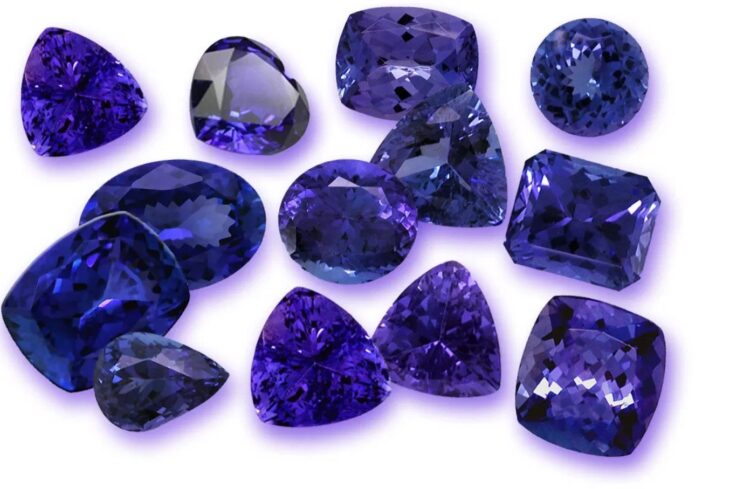
Source: Natural Tanzanite
There is no one universal way of grading colored gemstones like tanzanite. However, one of the most-used grading systems comes from the Tanzanite Foundation. The system divides the gemstone into a variety of hues, ranging from bluish-violet to violetish-blue.
Of more importance is the clarity grading. The clarity grading of colored gemstones is based upon the eye-clean standard. “Eye-clean” means a gemstone is considered to be flawless. Tanzanite is generally an eye-clean gemstone. It is rated as a Type I gemstone by the Gemological Institute of America. Tanzanite with inclusions affecting its clarity is worth a lot less than eye-clean tanzanite.
Final Thoughts
With the gem becoming ever more popular and supplies beginning to run out, there has never been a better time to own the rare gemstone. But it’s not all about the investment. At the end of the day, tanzanite is a stunningly beautiful blue-violet stone that you will want to show off and treasure for years to come.
